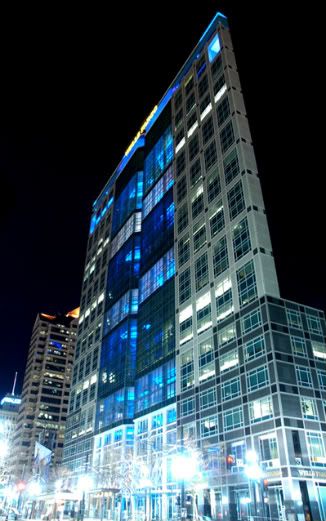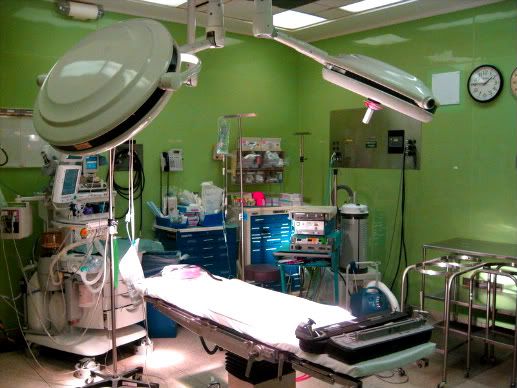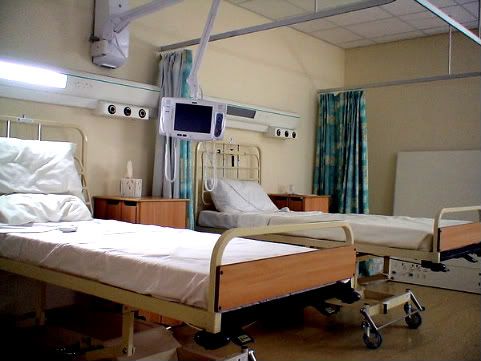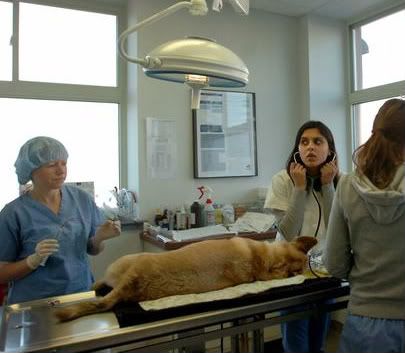Kumogakure hospital.
Jan 2, 2015 13:54:32 GMT -7
Post by Marii K. Kazeraikou on Jan 2, 2015 13:54:32 GMT -7
.::.::.::. Kikaijinsei .::.::.::.

((Chance of Life))
Description:
A hospital is a more then a location where people go to be healed. In essence, a hospital can be considered a “chance” in many cases and scenarios. For a new born child, being born in a hospital improves their “chance” in living. For the sick, wounded and harmed, seeking aid from a hospital improves their “chance” of survival. A hospital gives a person the “chance to live” in this world. However, a hospital can take away a life, just as it could give one. The sick and elderly have very low “chances” in living. Critically injured people have slim “chances” of pulling through a disease or medical condition. A hospital, just as in existence, can give you many chances; both good and bad. Thus, a “chance of life” would be a most befitting name for a hospital.
The hospital for Kumogakure is located close to the village’s center. Being located here allows for the greatest amount of accessibility for the village and its people. The main roads of the village interconnect and grant the quickest routes of access to the hospital.
Kikaijinsei:
The hospital is fairly large and modern in its design. It is a six story building, with multiple roads connecting to its center. The building itself is given a gentle bright blue highlight, making it stand out above the others building located in cloud. Having the building well lit at all time makes it very visible and clear in sight. The blue light given off by the building allows for a very smooth and delicate “aura” to be perceived by the village itself. It allows everyone to know and feel as if they were always to be protected, watched over and cared for by the village’s hospital. Never would a person believe that these doors were close to them.
In terms of security, the hospital is rather lax. It is highly uncommon that this location would be attacked in any way, shape or form. A hospital is meant to heal whom ever walks through its door, friend or foe. By the medical staff’s honor, it is vowed by all that “A sick man only seeks to be healed, and seeks nothing else”. This code of conduct is highly respected by all, villager or not. Therefore, the hospital does not require an intense amount of security as do other locations.
Ground level:
The first level of Kikaijinsei, contains three different locations. The entrance of the hospital leads to a small reception area, where the sick is admitted and/or where patients seek help, information, appointments, etc. A receptionist is always available to assist any one and any person who is need of help. Within the reception area, small rows of chairs are stationed for those who wish to sit, wait, or are on call by the receptionist.
Also located on this floor is a large room available only to the staff of the hospital. This room is the basic resting room for staff members and medics of the hospital. Here, medics can converse with others, and rest when needed. Lastly, emergency admittance is located on this floor. Entrances to the south and north of the hospital allow for individuals to be rushed in for medical attention when need be. These entrances lead directly into the emergency rooms located on the ground and second floors.

Emergency rooms, second and third floor:
Here within the second floor lies a mixture of new and old traditions, techniques and practices. It is essential that a person’s life is saved, and because of this dire need, combinations of new and old techniques are used; greatly increases a person’s chance of survival. Ancient Medical seals, modern technology and human endearment ensure a person’s life can be saved here within the emergency room. They are six rooms located here in the ER. Each room being an exact duplicate of the other with a rough size of 10x10x5 meters. A main operating table is located at the rooms middle, where medical staff can service a patient from any required angle.
To the sides of the operating tables are various medical equipments, monitors and screens, which aid the medical staff. Medical tools, scalpels, needles and clamps are always available and always sterilized. Up to six medics can operate and heal one person at a time in any of the rooms. Medics usual do so in an organized pattern: two medics operating, while four supply continuous healing jutsus and chakra to the patient.
Beyond this operating table, located within the same room, is a bookshelf containing various medical books and drawers containing emergency herbs. These large shelves located at the corners of the room contain various books and herb to be used on the spot if ever needed. These books are referenced information and cane be used by staff at all times. Herbs are used and available to improved healing and medical jutsu at the same time.
Located in the floor above the emergency room, lays rooms where the most ancient and most powerful medical techniques are used. This floor contains four duplicate rooms, and are only open to a few medical staff members. The room is also a 15x15x5 meter sized room, painted black with candles and lamps hanging from the ceiling. Here, head medical staff can perform powerful and dangerous medical jutsus, the likes which many will never see. Upon the floor of each room lies a special seal which grants medics the use of extremely rare and risky medical jutsus. The seal appears to be a large circle, cover in endless amounts of kanji and primordial scriptures, long forgotten and though to be forbidden. Additional circles are located in and around the entire seal, to which to up to four medics sit and work together in hopes of healing the patient with their ancient seals and techniques. This area is off limits to a majority of the hospital, and must be granted access by the head medic director only.

Patient ward:
On the fourth floors are patient healing rooms. Here many can find beds to which the healed are stationed at for recovery. Beds on this floor are very modern, and contain screens, monitors and displays to track patient health at all times. The ward consists of one long corridor, roughly 60 meters in length and 10 meters in width and 5 meters in height. Over 60 beds are stationed and watched over on this floor, allowing for a total of 60 people to be cared for at any given time.
Medics are able to continue treatment and aid to the sick here, as additional books, herbs and tools are also available for use. A person’s health is continually monitored by staff to ensure that a person recovery and full health are attained. Healing continues beyond the medical wards and emergency rooms as some patient cases require longer healing.

Animal wards:
In a ninja world, animals are often used as companions, used for friendship, and even used as tools. Many clans utilize animals for their ninja art, and have become a valuable asset to the ninja warrior. Just like their human counterpart, animals receive wounds and can become harmed as well; leaving them in the need of medical assistance. The 5th floor of the village hospital is dedicated for healing and aiding wounded ninja animals. The floor, like many floors of this hospital, houses operating rooms, and out patient room, just for animals. Animals of all types can be healed here, from avian species, to canine, to feline to even aquatic animals.
Just as the emergency rooms, they are roughly 6 rooms located here. Each room is an exact duplicate of other. Each room is rather large, roughly 10x10x5 meters in size. A main operating table is located at the rooms middle, where medical staff can service animals from any required angle. To the sides of the operating tables are various medical equipments, monitors and screens, which aid the medical staff. Medical tools, scalpels, needles, and clamps are always available and always sterilized.

Hospital labs:
Each and every hospital requires a laboratory for research and testing. The villages hospital does not fall short in this department, as its research and testing rooms are rather large. This lab is is often used to do such things as blood testing, poison analysis, and medical diagnosis, but can often extend beyond this intended function. Medics can often be found studying various information regarding the anatomy and physiology of the human body.
The lab is laid out in such a manner, that many may occupy its space while never feeling like the room is overcrowded. The lab itself contains various counter tops, each strewed with lab equipment such as test tubes, microscope, forceps, scalpels, etc. Shelves also located within the room contain a wealth of knowledge regarding the human body, which can be readily used by anyone within the room. This room also acts as a database for information, as decades upon decades of knowledge is stored within the books themselves. Medic are given enough tools here within the labs, to also make medicine and mixtures from available herbs and potions.
The lab also has a very large freezer, which is used to store such things as blood samples, herbs, mixtures to even dead bodies as organs; without ever having the fear of a body rotting or items going unpreserved.
Items/objects stored in lab and hospital:
| Complexity of Injury | Rank of Wound | IC Days in Hospital | # of Post Minimum | The Bill |
| Minor wound. | D | 1 | 2 | 2,768 |
| Sustained injury. | C | 2 | 2 | 5,625 |
| Critical infliction. | B | 5 | 3 | 11,250 |
| Serious condition. | A | 8-9 | 4 | 27,500 |
| Life-threatening. | S | 12-14 | 5 | 55,000 |
Note: Please contact the front desk at the hospital for health needs. They will in turn contact the Raikage for medical coverage if available.








